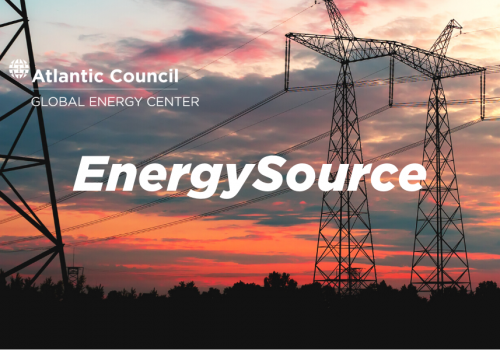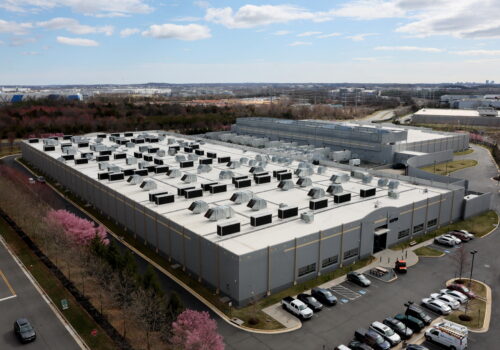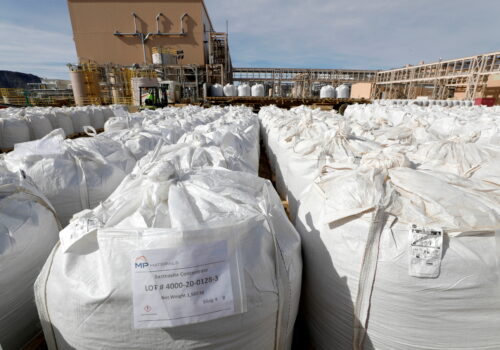Note: This is an update to a New Atlanticist article from October 2024 on the US Strategic Petroleum Reserve. Given the policy urgency surrounding Israel’s strikes on Iran, the authors have updated the previously-published work with the latest data and developments.
The US Strategic Petroleum Reserve (SPR) of crude oil is well-stocked, expanding policymakers’ optionality in the crisis in the Middle East.
STAY CONNECTED
Sign up for PowerPlay, the Atlantic Council’s bimonthly newsletter keeping you up to date on all facets of the energy transition.
After accounting for fifty-two-week averages of imports and exports, as well as current inventory levels, the SPR’s net import cover is historically high, holding 23.8 weeks’ worth compared to the 17.1-week average since 2009. Over 107 million barrels from the SPR could be released without falling below post-2009 historical levels of net import cover. Fatih Birol, Executive Director of the International Energy Agency (IEA), issued a statement noting there are over 1.2 billion barrels of emergency oil stocks in the IEA oil security system.
The United States’ SPR has shifted since the early 2010s, when it held nearly 730 million barrels, covering roughly 11.5 weeks of crude net import demand, at fifty-two-week averages. With rising US oil production and exports, the SPR’s net import cover gradually increased over the early and mid-2010s.
As the United States rapidly became a major crude oil exporter, inventory management strategy shifted. Congressionally mandated sales from the SPR occurred from 2017 through the first days of the COVID-19 pandemic, as the barrels in inventory declined from around 695 million barrels at the beginning of 2017 to around 635 million barrels in April 2020. Inventories were further reduced between 2022 and 2023, as the United States and its allies worked to combat Russia’s full-scale invasion in Ukraine and its effects on energy markets. Since mid-2023, the United States began slowly restocking the SPR and inventories currently stand at over 402 million barrels.
While SPR inventories are near their lowest absolute levels in over three decades, the stockpile is very well-placed to meet its mission, which is to “reduce the impact of disruptions in supplies of petroleum products and to carry out obligations of the United States under the international energy program.” That’s because while the SPR’s crude oil inventory levels have fallen, US imports needs have receded, even as US exports have surged. Accordingly, US net crude oil imports stand at just over two million barrels per day, down sharply from ten million barrels per day in 2007, or eight million barrels per day in 2017.
The rise in US crude exports and the drop in net imports have bolstered US oil security. However, challenges remain. US refineries are optimized for specific crude grades, many of which still need to be imported. Shifting light, sweet crude exports to domestic use could, for example, disrupt refineries optimized for heavier, more sulfuric crude grades.
Despite these limitations, SPR inventories are at elevated levels, allowing the United States to cover about 23.8 weeks of demand. Net crude oil import cover is sharply higher than before the shale boom, or even immediately before the COVID-19 pandemic.
Finally, US crude oil production and consumption are projected to remain stable in 2025 and 2026. Technological improvements and—critically—the removal of energy infrastructure bottlenecks are supporting domestic crude production. The recently inaugurated Matterhorn Express natural gas pipeline, which runs west-to-east across Texas, has removed a key takeaway constraint from the Permian basin, improving US oil production fundamentals and sending domestic output higher. The EIA’s latest forecast holds crude oil net imports will remain flat or decline modestly, enabling the United States to draw down inventories even further while still maintaining net import coverage.
The United States’ strategic petroleum reserves and substantial domestic oil production leave it well-positioned to weather a crisis in the Middle East, barring major, prolonged outages to Gulf oil production.
Joseph Webster is a senior fellow at the Atlantic Council’s Global Energy Center and the Indo-Pacific Security Initiative; he also edits the independent China-Russia Report.
Landon Derentz is senior director and Morningstar Chair for Global Energy Security at the Atlantic Council’s Global Energy Center. He previously served as director for energy at the White House National Security Council and director for Middle Eastern and African affairs at the US Department of Energy.
This article reflects their own personal opinions.
MEET THE AUTHOR
RELATED CONTENT
OUR WORK

The Global Energy Center develops and promotes pragmatic and nonpartisan policy solutions designed to advance global energy security, enhance economic opportunity, and accelerate pathways to net-zero emissions.
Image: Raw water pumps on the high pressure pump pad. (US Department of Energy, https://www.flickr.com/photos/departmentofenergy/14926452875/)







